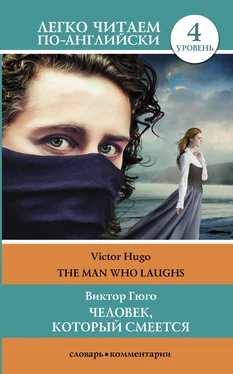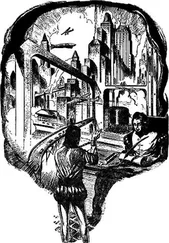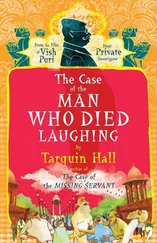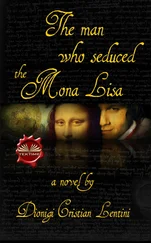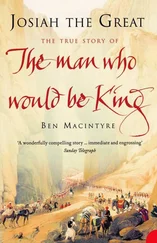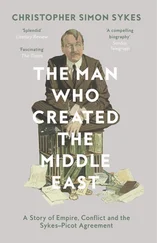The manufacture of monsters was practised on a large scale. Scarcely human beings, they were useful to voluptuousness and to religion. They knew how to produce things in those days which are not produced now; they had talents which we lack. We no longer know how to sculpture living human flesh. Men were once virtuosi in that respect, but the art has become so simplified that it will soon disappear. The surgeons were cutting the limbs of living men, opening their bellies and dragging out their entrails. The vivisection of former days was not limited to the manufacture of phenomena for the market-place, of buffoons for the palace, and eunuchs for sultans and popes. One of its triumphs was the manufacture of cocks for the king of England.
It was the custom, in the palace of the kings of England, to have a watchman, who crowed like a cock. This watcher, awake while all others slept, ranged the palace, and raised from hour to hour the cry of the farmyard, repeating it as often as was necessary.
The memoirs of Catherine II. inform us that at St. Petersburg, scarcely a hundred years since, whenever the czar or czarina was displeased with a Russian prince, he was forced to squat down in the great antechamber of the palace, and to remain in that posture a certain number of days, mewing like a cat, or clucking like a sitting hen, and pecking his food from the floor. These fashions have passed away; but not so much, perhaps, as one might imagine.
The commerce in children in the 17th century was connected with a trade. The Comprachicos engaged in the commerce, and carried on the trade. They bought children, worked a little on the raw material, and resold them afterwards.
The venders were of all kinds: from the wretched father, getting rid of his family, to the master, utilizing his stud of slaves. The sale of men was a simple matter.
For a long time the Comprachicos only partially concealed themselves. Under the Stuarts, the Comprachicos were welcome at court.
The Comprachicos had a genius for disfiguration. To disfigure is better than to kill. There was, indeed, the iron mask, but that was a mighty measure. Besides, the iron mask is removable; not so the mask of flesh. You are masked for ever by your own flesh – what can be more ingenious? The Comprachicos worked on man as the Chinese work on trees.
Not only did the Comprachicos take away his face from the child, they also took away his memory. This frightful surgery left its traces on his countenance, but not on his mind. The Comprachicos deadened the little patient by means of a stupefying powder, and suppressed all pain. This powder has been known in China, and is still employed there in the present day. This is convenient: by ordering your dwarf betimes you are able to have it of any shape you wish.
James II. tolerated the Comprachicos for the reason that he made use of them. We do not always disdain to use what we despise.
The Comprachicos were honest folk. Whatever you may think of them, they were sometimes sincerely scrupulous. They pushed open a door, entered, bargained for a child, paid, and departed.
They were of all countries. Under the name of Comprachicos fraternized English, French, Castilians, Germans, Italians. The Comprachicos were rather a fellowship than a tribe; rather a residuum than a fellowship. To wander was the Comprachicos’ law of existence – to appear and disappear. Even in the kingdoms where their business supplied the courts, they were ill-treated. Kings made use of their art, and sent the artists to the galleys.
It was, as we have said, a fellowship. It had its laws, its oaths, its formulae. The Comprachicos, like the Gipsies, had appointed places for periodical meetings. From time to time their leaders conferred together. In the seventeenth century they had four principal points of rendezvous: one in Spain, one in Germany, one in France, one in England.
The laws against vagabonds have always been very rigorous in England. A tramp was a possible public enemy. “Where do you live? How do you get your living?” And if someone could not answer, harsh penalties awaited him.
But the Comprachicos, we insist, had nothing in common with the gipsies. The gipsies were a nation; the Comprachicos were a compound of all nations. The gipsies were a tribe; the Comprachicos a freemasonry – a masonry having not a noble aim, but a hideous handicraft. Finally, the gipsies were Pagans, the Comprachicos were Christians, and more than that, good Christians. They were more than Christians, they were Catholics; they were more than Catholics, they were Romans.
An obstinate north wind blew without ceasing over the mainland of Europe, and yet more roughly over England, during all the month of December, 1689, and all the month of January, 1690. One evening, towards the close of one of the most bitter days of the month of January, 1690, something unusual was going on in one of the numerous inhospitable bights of the bay of Portland.
In this creek, the most dangerous of all, a little vessel, almost touching the cliff, was moored to a point of rock. The sun had just set. With no wind from the sea, the water of the creek was calm.
The twisting of the pathway could be distinguished vaguely in the relief of the cliff. The pathway of this creek terminated on the platform where the plank was placed. The passengers for whom the vessel was waiting in the creek must have come by this path.
Excepting the movement of embarkation, a movement visibly scared and uneasy, all around was solitude; no step, no noise, no breath was heard. The people who were going to sail away in the boat formed a busy and confused group, in rapid movement on the shore. To distinguish one from another was difficult; impossible to tell whether they were old or young. The indistinctness of evening intermixed and blurred them; the mask of shadow was over their faces. There were eight of them, and there were among them one or two women, hard to recognize under the rags and tatters in which the group was attired.
A smaller shadow, flitting to and fro among the larger ones, indicated either a dwarf or a child.
It was a child.
All wore long cloaks, torn and patched. They moved with ease under these cloaks. One of the men in the group embarking was a chief. He had sandals on his feet, and was bedizened with gold lace tatters and a tinsel waistcoat.
The crew of the boat was composed of a captain and two sailors. The boat had apparently come from Spain, and was about to return thither. The persons embarking in it whispered among themselves. The whispering was composed – now a word of Spanish, then of German, then of French, then of Gaelic, at times of Basque. They appeared to be of all nations, and yet of the same band. The crew was probably of their brotherhood.
Amid the confusion of departure there were thrown down in disorder, at the foot of the cliff, the goods which the voyagers wanted to take with them. Bags of biscuit, a cask of stock fish, a case of portable soup, three barrels – one of fresh water, one of malt, one of tar – four or five bottles of ale, an old portmanteau buckled up by straps, trunks, boxes, a ball of tow for torches and signals. These ragged people had valises. They were dragging their baggage with them.
No time was lost; there was one continued passing to and fro from the shore to the vessel, and from the vessel to the shore; each one took his share of the work – one carried a bag, another a chest. Also, they overloaded the child.
It was doubtful if the child’s father or mother were in the group. They made him work, nothing more. He appeared not a child in a family, but a slave in a tribe. No one spoke to him.
Читать дальше
